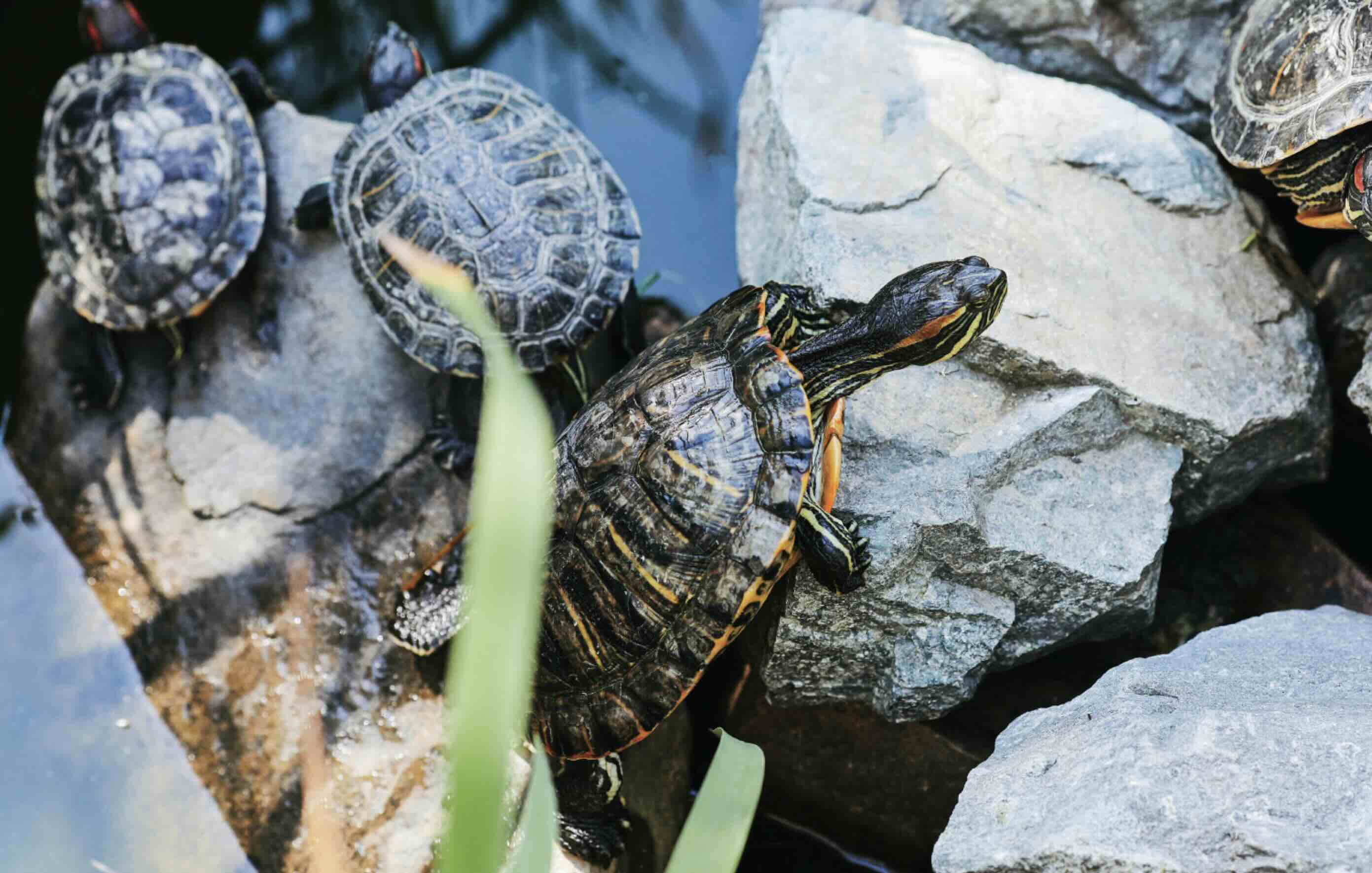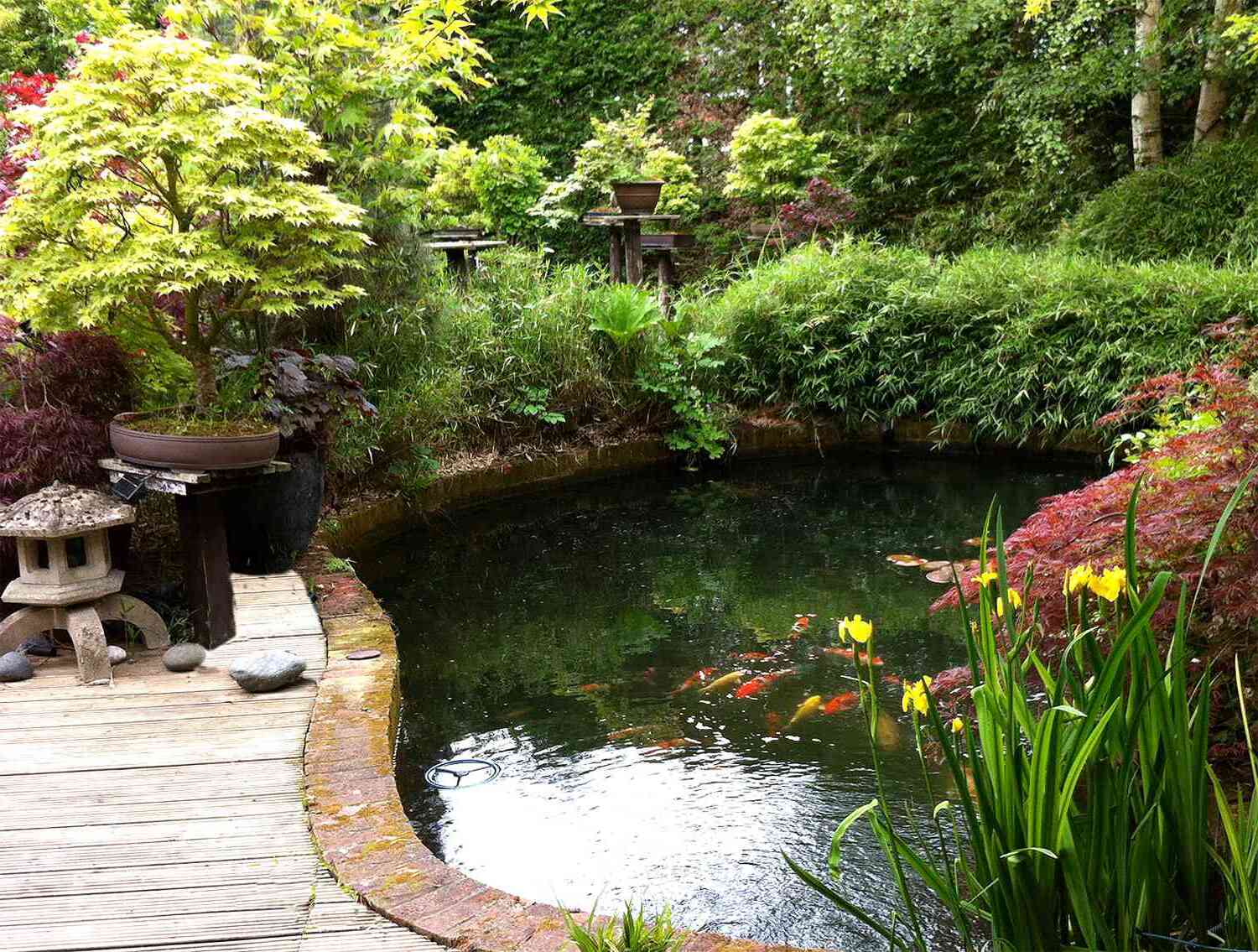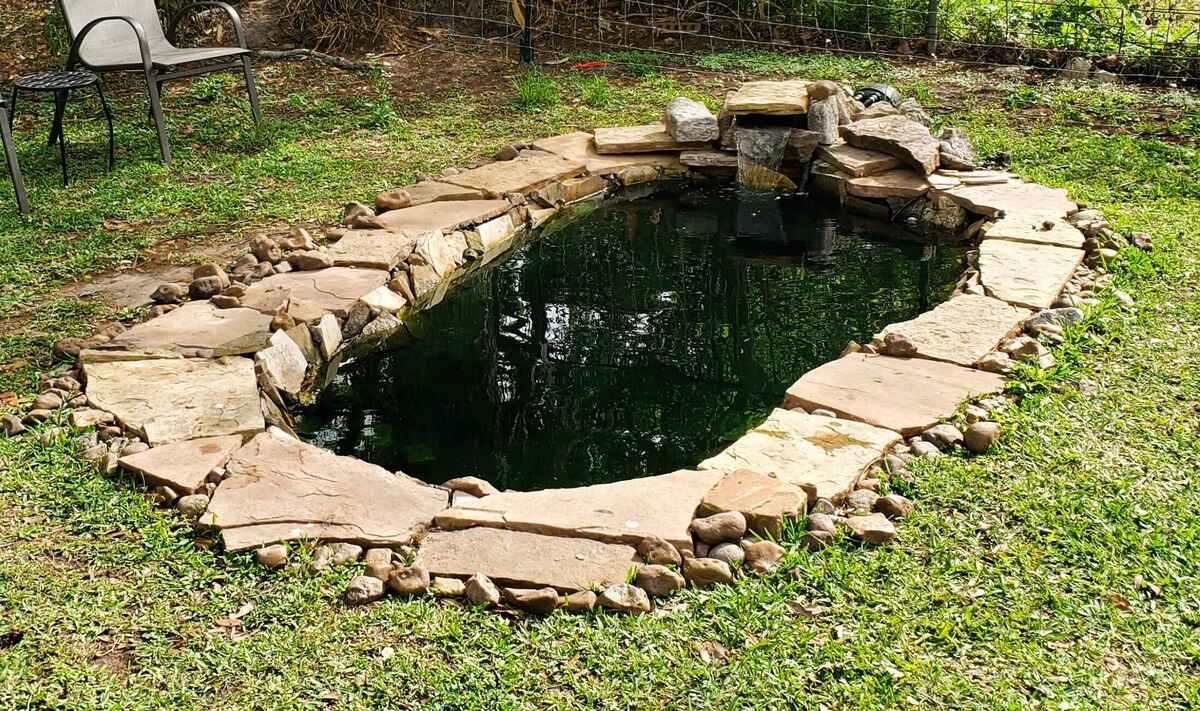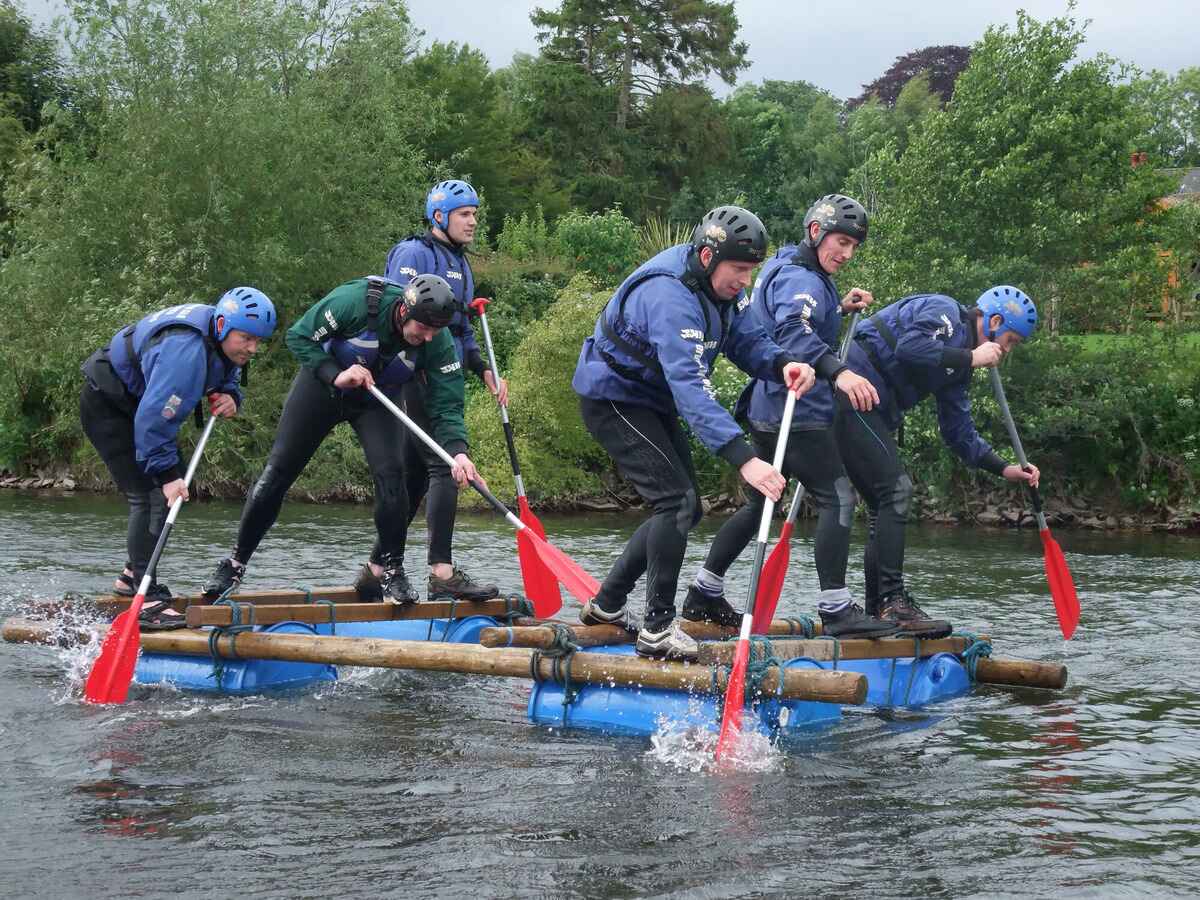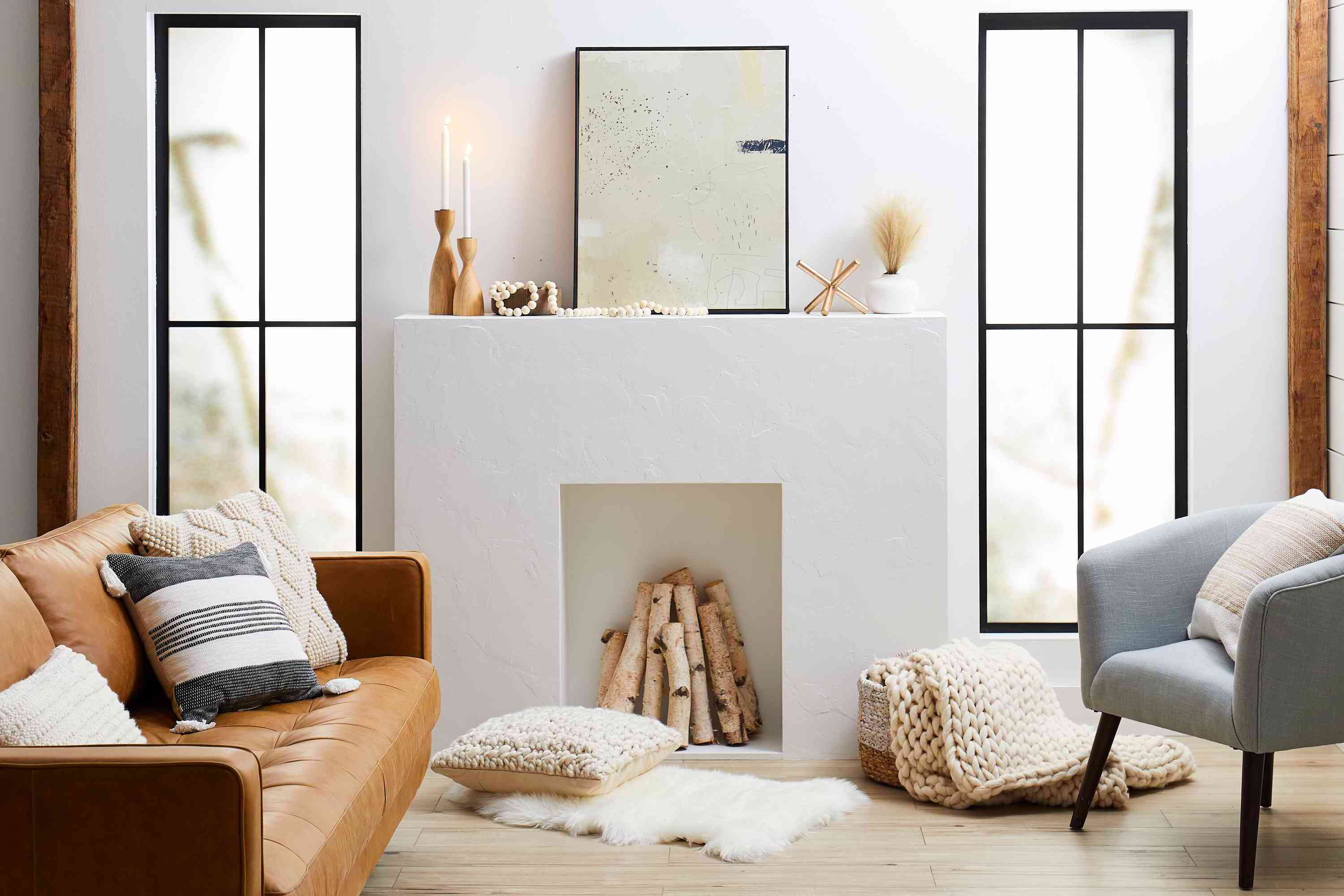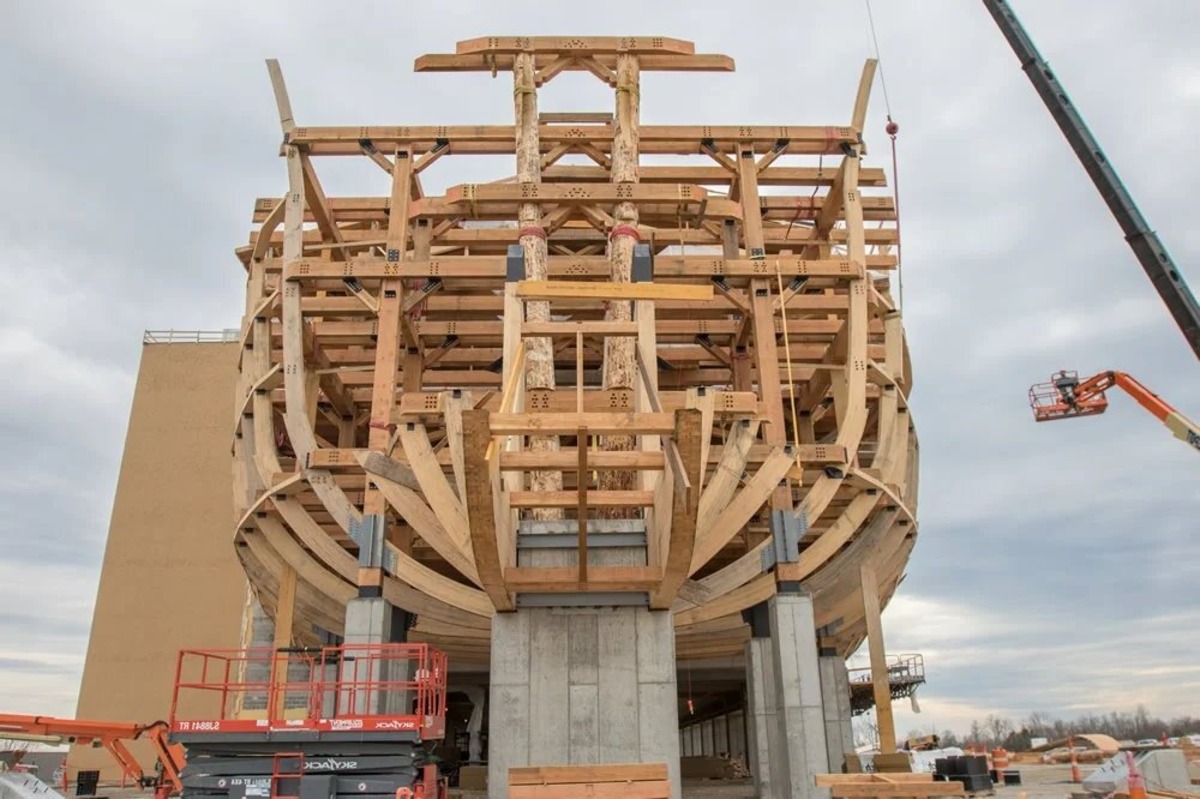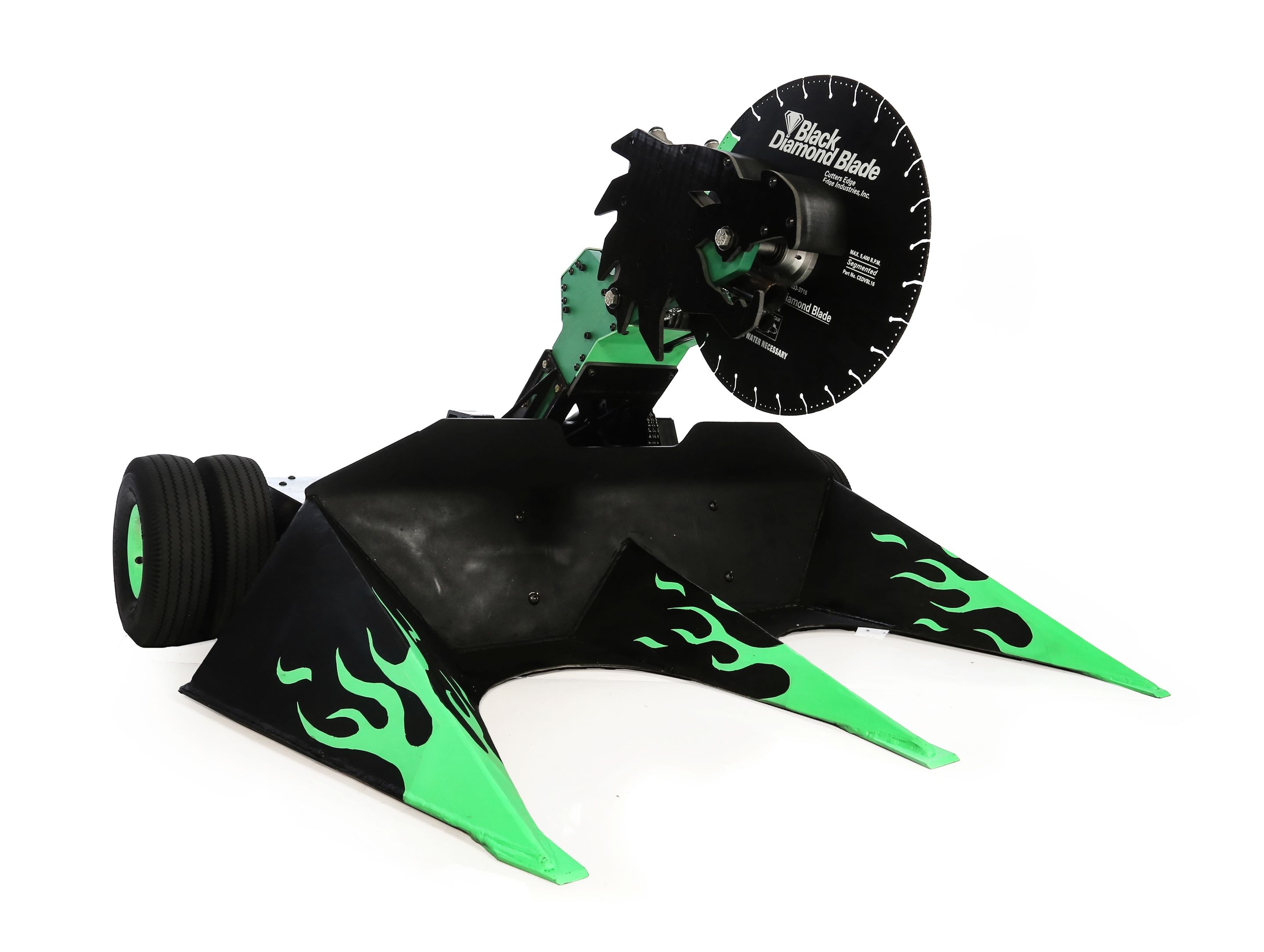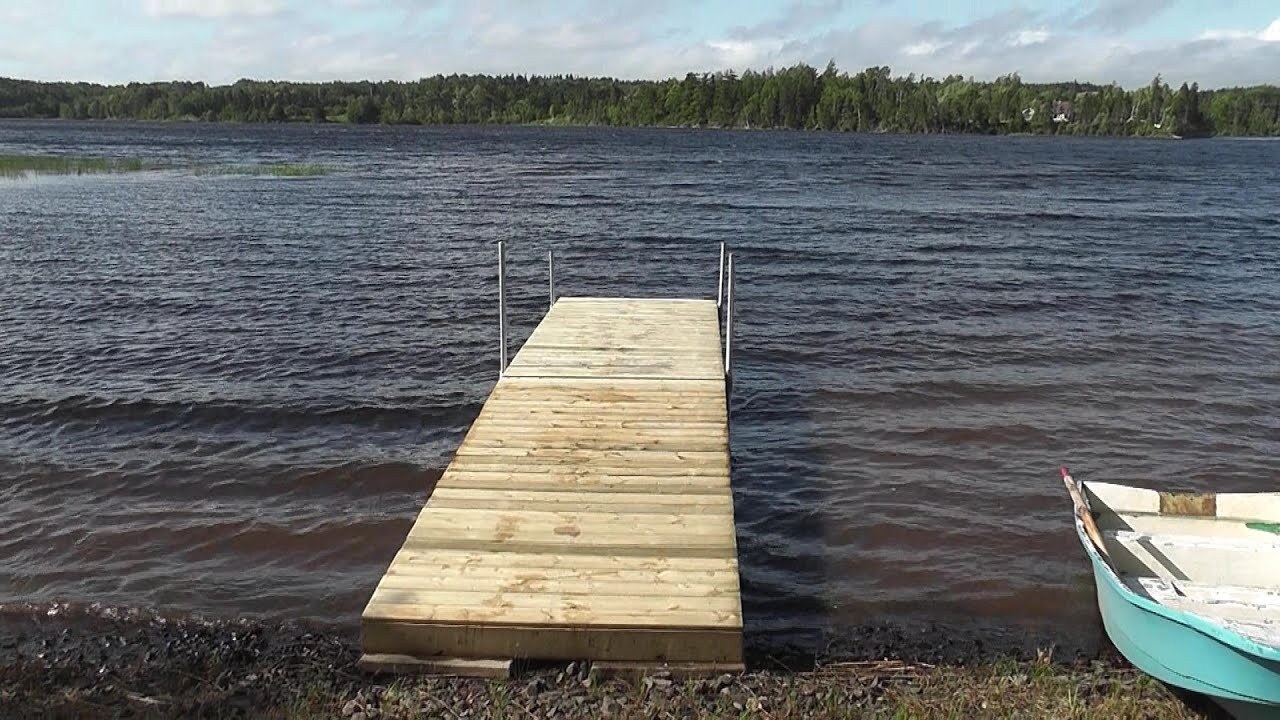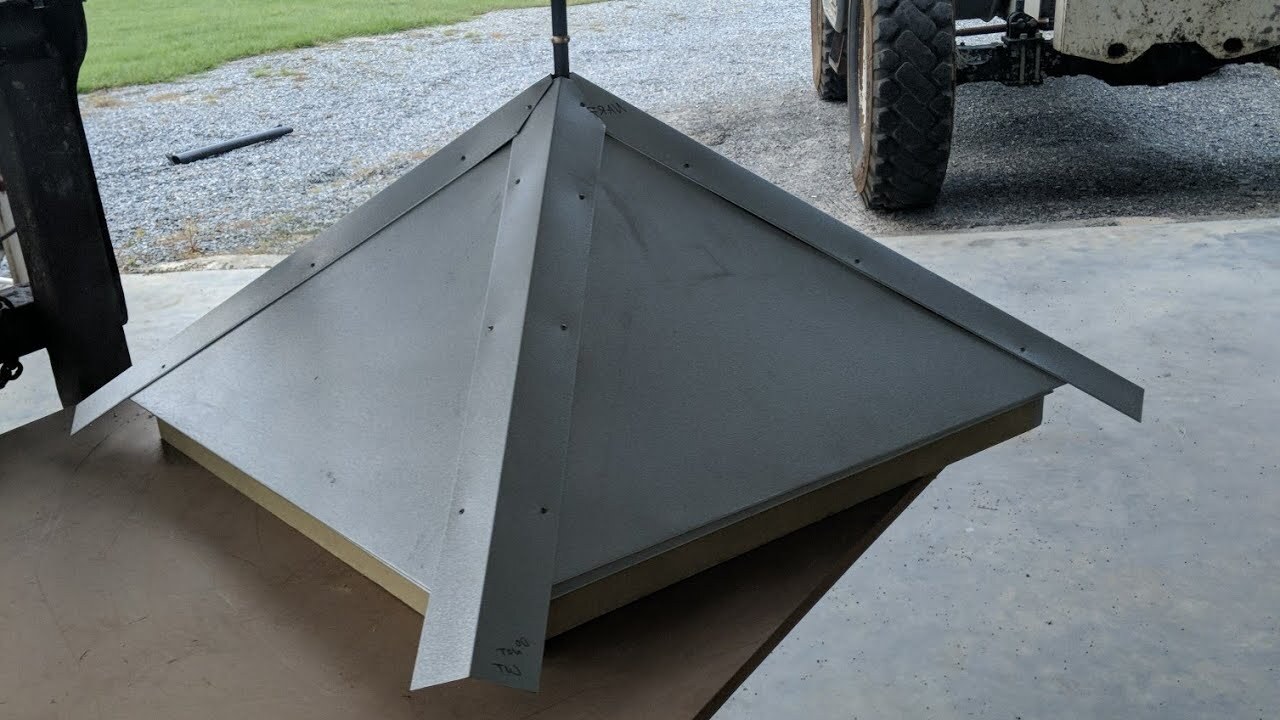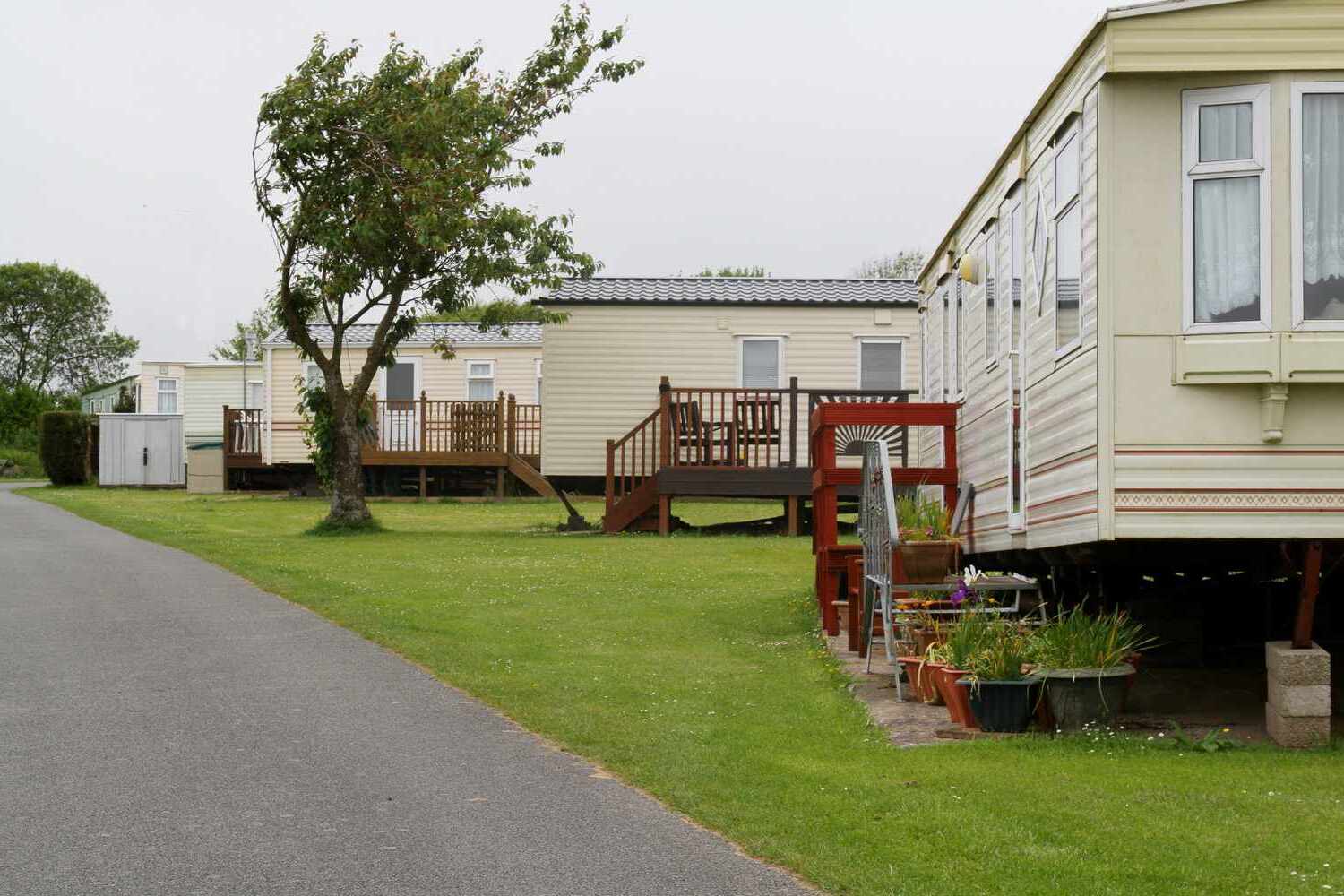Home>Outdoors & Camping>Landscaping>How To Build A Pond
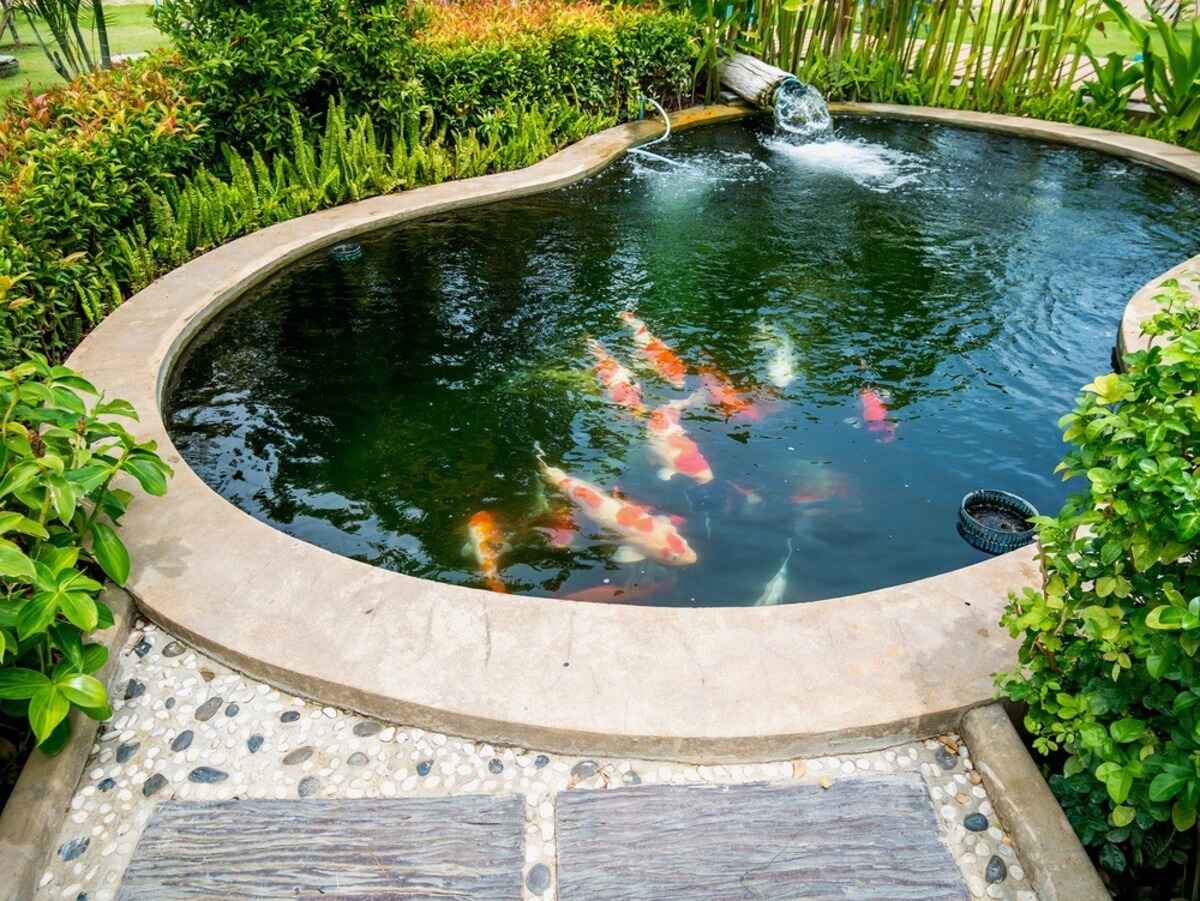

Landscaping
How To Build A Pond
Published: February 20, 2024

Content Creator for Outdoors & Camping, Sophie turns any yard into a sustainable paradise. Her dedication to DIY outdoor projects and volunteer work in community gardens shares joy and knowledge.
Learn how to enhance your landscaping with a beautiful pond. Our step-by-step guide will help you create a stunning focal point for your outdoor space.
(Many of the links in this article redirect to a specific reviewed product. Your purchase of these products through affiliate links helps to generate commission for Twigandthistle.com, at no extra cost. Learn more)
Introduction
Building a pond in your backyard can transform your outdoor space into a tranquil oasis, providing a serene retreat for relaxation and enjoyment. Whether you envision a small, ornamental pond or a larger, more elaborate water feature, the process of creating a pond requires careful planning, creativity, and a touch of nature-inspired artistry. From selecting the ideal location to adding the finishing touches with aquatic plants and wildlife, each step contributes to the harmonious integration of your pond into the surrounding landscape.
The allure of a well-designed pond extends beyond its aesthetic appeal. It serves as a habitat for a variety of aquatic life, including colorful fish, graceful water lilies, and vibrant dragonflies. The gentle sound of water cascading over rocks creates a soothing ambiance, attracting a diverse array of wildlife and providing a serene backdrop for outdoor gatherings. Additionally, a thoughtfully constructed pond can increase the overall value of your property, serving as a focal point that enhances the visual appeal of your garden.
Embarking on the journey of building a pond allows you to exercise your creativity and connect with nature in a meaningful way. As you delve into the intricacies of pond construction, you will gain a deeper understanding of the delicate balance required to create a thriving aquatic ecosystem. Each decision, from the selection of pond liner materials to the choice of aquatic flora and fauna, contributes to the unique character of your pond.
In the following steps, we will guide you through the process of building a pond, offering practical insights and expert tips to help you bring your vision to life. Whether you are a seasoned landscaper or a novice enthusiast, this comprehensive guide will equip you with the knowledge and inspiration needed to embark on this rewarding endeavor. Let's dive in and explore the art of pond construction, where creativity meets the serenity of nature.
Read more: How To Build A Koi Pond With Waterfall
Step 1: Planning and Design
The initial phase of building a pond is perhaps the most crucial, as it sets the foundation for the entire project. During the planning and design stage, it's essential to envision the type of pond that aligns with your aesthetic preferences and the overall landscape of your property. Consider the size, shape, and style of the pond, taking into account the existing flora and topographical features of the area.
Begin by sketching out your ideas on paper, outlining the desired dimensions and layout of the pond. This visual representation will serve as a valuable reference throughout the construction process. As you conceptualize the design, factor in the surrounding elements such as trees, shrubs, and other garden features, ensuring that the pond harmonizes with its environment.
Furthermore, consider the purpose of the pond. Are you aiming for a serene, reflective pool of water, or do you envision a dynamic ecosystem teeming with aquatic life? Understanding the primary function of the pond will guide your design choices and influence the selection of accompanying elements, such as waterfalls, fountains, or rock formations.
Incorporating safety measures into the design is paramount, especially if you have children or pets. Planning for secure boundaries, such as low walls or strategically placed rocks, can prevent accidental falls into the pond while maintaining its visual appeal.
Additionally, take into account the practical aspects of pond construction, such as access to electricity for pumps and lighting, as well as the availability of water sources for filling the pond. These considerations will streamline the implementation of essential components and ensure the long-term functionality of the pond.
Lastly, consider the environmental impact of the pond. By integrating native plants and creating diverse habitats, you can attract beneficial wildlife and contribute to the ecological balance of your garden. This thoughtful approach to pond design not only enhances the natural beauty of the area but also fosters a sustainable ecosystem.
As you delve into the intricacies of planning and design, remember that flexibility is key. Your initial concepts may evolve as you progress through the subsequent steps, allowing room for creative adaptation and refinement. With a well-considered plan in place, you are ready to embark on the next phase of building your pond: choosing the right location.
Step 2: Choosing the Right Location
Selecting the ideal location for your pond is a pivotal decision that significantly influences its visual impact and ecological functionality. The chosen site should seamlessly integrate with the surrounding landscape while providing optimal conditions for the pond's long-term health and vitality.
When evaluating potential locations, consider the following factors:
Sunlight Exposure:
Assess the sunlight exposure in different areas of your yard throughout the day. Most aquatic plants thrive in full or partial sunlight, so choosing a location that receives adequate sunlight is essential for their growth and overall ecosystem balance.
Proximity to Trees and Shrubs:
While trees and shrubs can enhance the natural beauty of a pond, their proximity can also pose challenges. Falling leaves and debris can accumulate in the water, potentially leading to water quality issues. Additionally, tree roots may pose a threat to the pond liner. Therefore, it's advisable to position the pond away from overhanging branches and extensive root systems.
Read more: How To Build A Natural Pond
Slope and Drainage:
Ensure that the chosen location has a relatively level surface to facilitate the construction process and prevent water runoff. Adequate drainage is also crucial to prevent water from accumulating around the pond, which could lead to erosion or structural damage.
Accessibility:
Consider the accessibility of the chosen location for maintenance and care. Easy access will simplify tasks such as cleaning, plant maintenance, and potential repairs, contributing to the long-term enjoyment and sustainability of the pond.
Aesthetic Harmony:
The pond should complement the overall aesthetics of your garden and outdoor space. Its placement should create a visually appealing focal point while harmonizing with the existing landscape features, such as flower beds, pathways, or other water features.
Wildlife Considerations:
Take into account the potential impact on local wildlife. Positioning the pond in proximity to natural habitats, such as bird-feeding areas or butterfly gardens, can attract a diverse array of wildlife, enriching the ecological diversity of your garden.
By carefully evaluating these factors, you can identify the optimal location that aligns with your vision for the pond while ensuring its ecological sustainability and long-term functionality. Once the location is chosen, you can proceed to the next step: excavating the area to prepare the foundation for your pond.
Read more: How To Build A Pond Dock
Step 3: Excavating the Area
Excavating the area marks a pivotal phase in the construction of a pond, laying the groundwork for the physical manifestation of your envisioned water feature. This step involves carefully shaping the terrain to accommodate the pond's dimensions and depth, creating a stable foundation for the subsequent installation of the pond liner and other essential components.
The excavation process begins with outlining the perimeter of the pond using spray paint or stakes and string, delineating the boundaries with precision. This visual guide serves as a reference for the excavation, ensuring that the dimensions align with your initial design and layout.
Using a shovel, excavator, or a combination of both, the designated area is gradually dug out to the desired depth, accounting for the varying levels that may be incorporated into the pond design. It's essential to maintain a consistent depth throughout the excavation process, paying close attention to the contours of the pond to achieve a natural and visually appealing shape.
As the excavation progresses, the excavated soil is carefully set aside for potential later use, such as creating elevated areas around the pond or for landscaping purposes. This mindful approach to soil management minimizes waste and provides opportunities for integrating natural elements into the pond's surroundings.
During the excavation, it's crucial to periodically assess the depth and shape of the pond, making adjustments as needed to ensure uniformity and structural integrity. Additionally, the soil composition should be examined to identify any potential issues, such as rocky terrain or excessive clay content, which may impact the stability of the pond.
Once the excavation is complete, the area is meticulously cleared of debris and leveled to prepare for the next phase of the construction process. This meticulous attention to detail sets the stage for the seamless installation of the pond liner, ensuring a secure and stable foundation for the aquatic ecosystem to thrive.
With the area excavated according to the planned dimensions and contours, you are now ready to proceed to the subsequent step: installing the pond liner. This pivotal phase will bring your vision of a tranquil water feature one step closer to realization, setting the stage for the artistic embellishments that will transform the excavated area into a captivating aquatic sanctuary.
Step 4: Installing the Pond Liner
With the excavation phase completed, the installation of the pond liner marks a significant stride towards materializing your envisioned water feature. The pond liner serves as a crucial barrier that retains the water within the excavated area, creating the foundational structure for the aquatic ecosystem to flourish.
Before proceeding with the installation, it's essential to select a high-quality pond liner that aligns with the dimensions and design of your pond. Flexible, durable materials such as EPDM (ethylene propylene diene monomer) rubber or PVC (polyvinyl chloride) liners are commonly used for their resilience and longevity. Measure the dimensions of the excavated area accurately to ensure that the chosen liner provides adequate coverage, with an allowance for overlap to accommodate the contours of the pond.
To begin the installation, carefully unfold the pond liner and position it within the excavated area, ensuring that it drapes smoothly over the contours without excessive stretching or folding. As you adjust the liner, create gentle folds and pleats to accommodate any irregularities in the terrain, allowing the liner to conform to the natural shape of the pond.
Once the liner is positioned to your satisfaction, secure its placement by adding a layer of protective underlayment. This cushioning material, often made of geotextile fabric, safeguards the liner from potential punctures caused by sharp rocks or roots, enhancing its longevity and resilience. Smooth out any wrinkles or creases in the liner to minimize stress points and ensure uniform coverage.
As the liner and underlayment are meticulously positioned, carefully trim any excess material, leaving a sufficient margin to facilitate the subsequent steps of adding rocks and plants. Pay close attention to the edges of the pond, ensuring that the liner extends beyond the perimeter to create a secure seal and prevent water seepage.
Once the liner is securely in place, gradually begin filling the pond with water, monitoring the positioning of the liner to prevent displacement. As the water level rises, the weight of the water will further anchor the liner, conforming it to the contours of the pond and creating a seamless, watertight enclosure.
The successful installation of the pond liner sets the stage for the artistic embellishments that will breathe life into your pond, from the placement of natural rocks and boulders to the introduction of vibrant aquatic plants. With the foundation in place, the next steps of adding rocks and plants will infuse your pond with character and natural beauty, bringing your vision of a serene aquatic sanctuary one step closer to fruition.
Step 5: Adding Rocks and Plants
The addition of rocks and plants to your pond is a transformative phase that infuses the aquatic environment with natural beauty and ecological vitality. As you embark on this step, envision the harmonious integration of rocks and plants to create a captivating and sustainable ecosystem within your pond.
Rocks:
Selecting and positioning rocks within the pond serves multiple purposes, contributing to both the aesthetic appeal and functional aspects of the aquatic environment. Natural rocks and boulders not only enhance the visual allure of the pond but also provide essential habitats for beneficial microorganisms and aquatic life.
When choosing rocks for your pond, opt for a variety of sizes and shapes to create a diverse and visually engaging landscape. Larger rocks can be strategically placed along the perimeter of the pond, creating a natural border and anchoring the pond liner. Smaller rocks and gravel can be used to create shallow areas or to line the bottom of the pond, providing a substrate for aquatic plants and beneficial bacteria.
Position the rocks thoughtfully, considering the visual flow and naturalistic arrangement. Create clusters of rocks to mimic natural formations, incorporating gentle slopes and ledges to facilitate the growth of aquatic plants and provide shelter for fish and other aquatic inhabitants. Additionally, consider the interplay of light and shadow as you position the rocks, enhancing the visual depth and dynamic appeal of the pond.
Read more: How To Build A Pond Waterfall
Plants:
The introduction of aquatic plants adds a layer of vibrancy and ecological balance to the pond, enriching the aquatic habitat and contributing to its overall sustainability. There are several categories of aquatic plants to consider, each serving distinct roles in the pond ecosystem:
-
Submerged Plants: These plants, also known as oxygenators, thrive beneath the water's surface, releasing oxygen and absorbing excess nutrients, thereby promoting water clarity and quality. Examples include Anacharis, Hornwort, and Vallisneria.
-
Marginal Plants: Positioned along the edges of the pond, marginal plants thrive in shallow water or moist soil, adding texture and visual interest to the pond's periphery. Species such as Cattails, Pickerelweed, and Iris contribute to the natural aesthetics and provide habitat for wildlife.
-
Floating Plants: These plants, such as Water Lilies and Duckweed, float on the water's surface, offering shade and shelter for aquatic life while inhibiting algae growth by reducing sunlight penetration.
-
Emergent Plants: With their roots submerged and foliage above the waterline, emergent plants, including Rushes, Water Irises, and Marsh Marigolds, contribute to the pond's structural diversity and provide nesting sites for birds and shelter for aquatic creatures.
Carefully select a diverse array of aquatic plants to create a balanced and visually captivating aquatic landscape. Position the plants strategically, taking into account their growth habits and spatial requirements. As the plants establish themselves, they will contribute to the ecological equilibrium of the pond, fostering a thriving habitat for fish, amphibians, and beneficial microorganisms.
By thoughtfully integrating rocks and plants into your pond, you are not only enhancing its visual appeal but also fostering a sustainable and biodiverse aquatic ecosystem. The next step of filling the pond with water will bring the landscape to life, setting the stage for the addition of fish and wildlife, further enriching the natural harmony of your pond.
Step 6: Filling the Pond with Water
Filling the pond with water is a pivotal moment that breathes life into the carefully crafted aquatic landscape, transforming the excavated area into a glistening oasis. As the crystal-clear water cascades into the pond, it signifies the culmination of meticulous planning and the beginning of a flourishing aquatic ecosystem.
The process of filling the pond requires a methodical approach to ensure the optimal balance of water volume and quality. Depending on the size of the pond, the water source may vary, ranging from a garden hose for smaller ponds to a dedicated water delivery for larger water features. It's essential to consider the source of the water and its compatibility with the aquatic environment, prioritizing clean, chlorine-free water to minimize stress on the newly introduced plants and wildlife.
As the water gradually fills the pond, observe its level closely, ensuring that it aligns with the planned depth while allowing for any adjustments to accommodate the natural contours of the pond. The gentle rise of the water level unveils the intricate features of the pond, accentuating the carefully positioned rocks and providing a reflective surface that mirrors the surrounding landscape.
During the filling process, take the opportunity to assess the water clarity and quality, addressing any potential issues such as sediment accumulation or excessive turbidity. If necessary, consider incorporating a water conditioner or beneficial bacteria to establish a healthy aquatic environment, promoting the growth of beneficial microorganisms and ensuring the well-being of introduced fish and wildlife.
As the pond reaches its optimal water level, the tranquil surface becomes a canvas for the interplay of light and shadow, creating a captivating spectacle that evolves throughout the day. The gentle ripples and reflections animate the landscape, infusing the surroundings with a sense of serenity and natural allure.
The completion of the filling process signifies the realization of your vision, as the pond transitions from a carefully excavated basin to a thriving aquatic sanctuary. The next phase of adding fish and wildlife will further enrich the ecosystem, fostering a dynamic and biodiverse habitat within your garden. With the pond filled to its brim, the stage is set for the introduction of aquatic inhabitants, marking the continuation of the pond's journey as a vibrant and sustainable ecosystem.
Step 7: Adding Fish and Wildlife
The introduction of fish and wildlife into your pond heralds the transformation of the aquatic environment into a dynamic and biodiverse ecosystem. Carefully selecting and introducing aquatic inhabitants contributes to the ecological balance and visual vibrancy of the pond, enriching its overall appeal and sustainability.
When considering fish for your pond, it's essential to choose species that are well-suited to the size and depth of the water feature. Popular choices include Koi, Goldfish, and Shubunkin, known for their vibrant colors and graceful movements. Prior to introducing fish, ensure that the pond has reached a stable ecological equilibrium, with established aquatic plants and adequate water quality. Acclimate the fish to the pond environment gradually, allowing them to adjust to the water temperature and conditions to minimize stress.
In addition to fish, the introduction of wildlife such as frogs, turtles, and beneficial insects further enhances the ecological diversity of the pond. Native frogs, such as the American Bullfrog or Green Frog, contribute to the natural ambiance with their distinctive calls and insect-eating habits, while turtles add a captivating and tranquil presence to the aquatic landscape. Beneficial insects, including dragonflies and water beetles, play a vital role in controlling pests and contributing to the overall ecological balance of the pond.
The presence of fish and wildlife introduces a captivating dimension to the pond, fostering a thriving ecosystem that captivates the senses and enriches the natural harmony of the surrounding landscape. As the fish gracefully navigate the water, and the wildlife finds refuge among the aquatic plants and rocks, the pond becomes a dynamic and biodiverse habitat, offering a glimpse into the intricate interconnectedness of nature.
With the addition of fish and wildlife, your pond evolves into a living, breathing ecosystem, where the delicate balance of aquatic life unfolds in a mesmerizing display of natural harmony. The culmination of this step marks the realization of your vision, as the pond becomes a flourishing sanctuary that beckons admiration and contemplation. The next phase of maintenance and care will ensure the continued vitality and beauty of the pond, nurturing the thriving aquatic community and sustaining the captivating allure of your outdoor oasis.
Step 8: Maintenance and Care
Maintaining a healthy and vibrant pond requires ongoing care and attention to preserve its ecological balance and visual allure. By implementing regular maintenance practices and mindful care, you can ensure that your pond remains a thriving sanctuary for aquatic life while enhancing the overall beauty of your outdoor space.
Read more: How To Build A Deck Over A Pond
Water Quality Management
Monitoring and maintaining water quality is paramount to the well-being of the pond ecosystem. Regular testing of water parameters, including pH levels, ammonia, nitrites, and nitrates, enables you to identify any imbalances and take corrective measures. Water changes, partial or complete, may be necessary to mitigate nutrient buildup and maintain optimal water clarity.
Aquatic Plant Care
Pruning and thinning aquatic plants as needed helps prevent overgrowth and maintains a balanced ecosystem. Remove decaying foliage and debris to prevent nutrient accumulation and algae proliferation. Additionally, fertilize plants as appropriate to promote healthy growth and vibrant blooms, contributing to the visual appeal of the pond.
Fish Health and Nutrition
Regularly assess the health of fish by observing their behavior and appearance. Provide a balanced diet and avoid overfeeding to prevent water contamination. In colder climates, consider winterizing the pond to ensure the well-being of fish during the colder months.
Algae Control
Implement natural algae control methods, such as the strategic placement of floating plants and the use of barley straw, to inhibit excessive algae growth. Manual removal of algae and debris, along with the use of beneficial bacteria, helps maintain water clarity and a healthy aquatic environment.
Equipment Maintenance
Regularly inspect and maintain pond equipment, including pumps, filters, and aerators, to ensure optimal functionality. Clean filters and remove debris to prevent clogging, promoting efficient water circulation and filtration.
Seasonal Considerations
Adapt maintenance practices to seasonal changes, such as adjusting feeding schedules for fish and protecting plants during colder months. In warmer seasons, monitor water levels and provide shade to prevent overheating and evaporation.
By incorporating these maintenance practices into your routine, you can uphold the vitality and beauty of your pond, fostering a sustainable and captivating aquatic ecosystem. The ongoing care and attention you invest in your pond will reward you with a tranquil and thriving outdoor oasis, where the delicate balance of nature unfolds in a mesmerizing display of natural harmony.
Conclusion
In conclusion, the journey of building a pond is a testament to the harmonious interplay of creativity, nature, and meticulous craftsmanship. From the initial stages of planning and design to the introduction of fish and wildlife, each step contributes to the transformation of an ordinary outdoor space into a captivating and sustainable aquatic sanctuary.
As the tranquil waters reflect the carefully positioned rocks and vibrant aquatic flora, the pond becomes a living canvas that evolves with the passage of time. The gentle ripples and the vibrant hues of fish breathe life into the landscape, offering a serene retreat for contemplation and admiration.
The art of pond construction extends beyond the physical manifestation of a water feature; it embodies a profound connection with nature and a commitment to fostering a thriving ecosystem. The deliberate selection of rocks and plants, the thoughtful integration of fish and wildlife, and the ongoing maintenance and care all converge to create a dynamic and biodiverse habitat.
Furthermore, the pond serves as a testament to the delicate balance of nature, where the interdependence of aquatic life unfolds in a mesmerizing display of natural harmony. The gentle hum of water cascading over rocks, the vibrant blooms of water lilies, and the graceful movements of fish coalesce to create a captivating tableau that transcends the boundaries of the constructed landscape.
As the seasons transition and the pond evolves, it becomes a focal point that beckons admiration and contemplation, offering a tranquil refuge amidst the bustling rhythms of everyday life. The enduring allure of the pond lies not only in its visual appeal but also in the immersive experience it provides, inviting individuals to connect with nature in a meaningful and rejuvenating manner.
In essence, the construction of a pond is a testament to the transformative power of nature-inspired artistry, where the convergence of creativity and ecological stewardship gives rise to a timeless and enchanting outdoor oasis. It stands as a testament to the enduring beauty of the natural world and the profound sense of tranquility it imparts to those who embrace its serene embrace.

